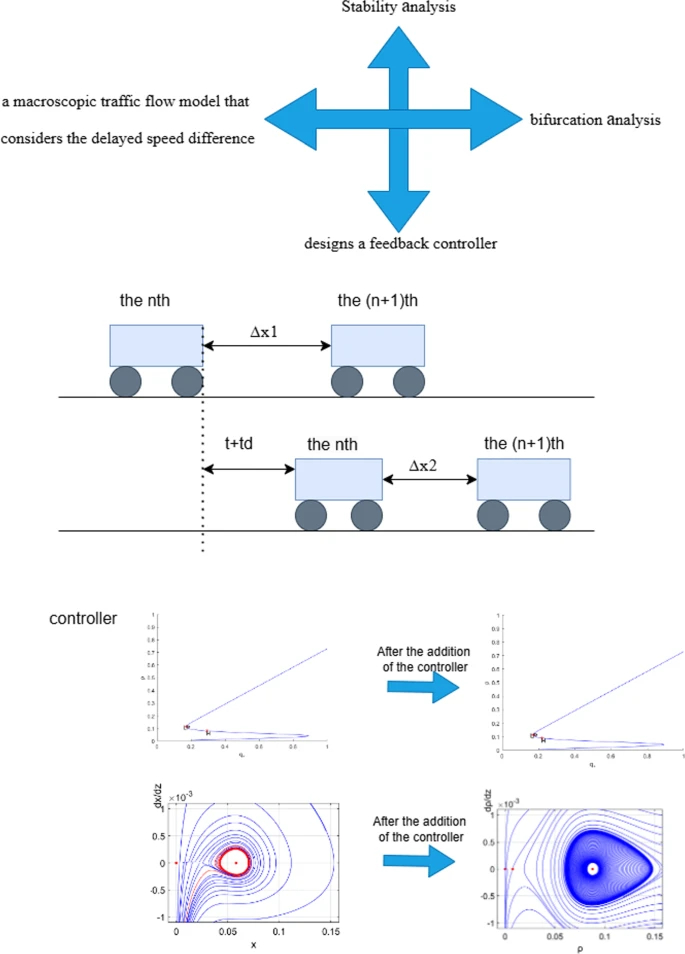https://doi.org/10.1140/epje/s10189-024-00462-3
Regular Article – Flowing Matter
Bifurcation analysis and control of the full velocity difference model with delayed velocity difference
1
College of Computer Science and Engineering, Northwest Normal University, 730070, Lanzhou, Gansu, China
2
College of Electrical Engineering, Lanzhou Institute of Technology, 730050, Lanzhou, Gansu, China
Received:
17
September
2024
Accepted:
17
November
2024
Published online:
8
December
2024
With the increase in the number of urban vehicles, various traffic problems have gradually emerged. Studying the causes of traffic congestion and proposing effective mitigation strategies have important practical significance. This paper proposes a macroscopic traffic flow model that considers the delayed speed difference. This paper applies nonlinear bifurcation to describe and predict nonlinear traffic phenomena on highways from the perspective of global stability of the traffic system. By using the traveling wave transformation, the proposed car-following model is converted into a macroscopic traffic flow model. Next, this paper employs the linear stability analysis to find the bifurcation points of the stability transition in the traffic system, exploring the qualitative characteristics of the inhomogeneous continuous traffic flow model. Theoretical derivations demonstrate the existence of bifurcation points within the model. Additionally, this paper plots the density-time space diagrams and phase plane diagrams of the system to visually present the sudden changes in traffic flow as variable parameters pass through these bifurcation points. Finally, this paper designs a feedback controller to regulate the Hopf bifurcation, aiming to delay or eliminate the occurrence of Hopf bifurcations in the stochastic system.
Copyright comment Springer Nature or its licensor (e.g. a society or other partner) holds exclusive rights to this article under a publishing agreement with the author(s) or other rightsholder(s); author self-archiving of the accepted manuscript version of this article is solely governed by the terms of such publishing agreement and applicable law.
© The Author(s), under exclusive licence to EDP Sciences, SIF and Springer-Verlag GmbH Germany, part of Springer Nature 2024
Springer Nature or its licensor (e.g. a society or other partner) holds exclusive rights to this article under a publishing agreement with the author(s) or other rightsholder(s); author self-archiving of the accepted manuscript version of this article is solely governed by the terms of such publishing agreement and applicable law.





